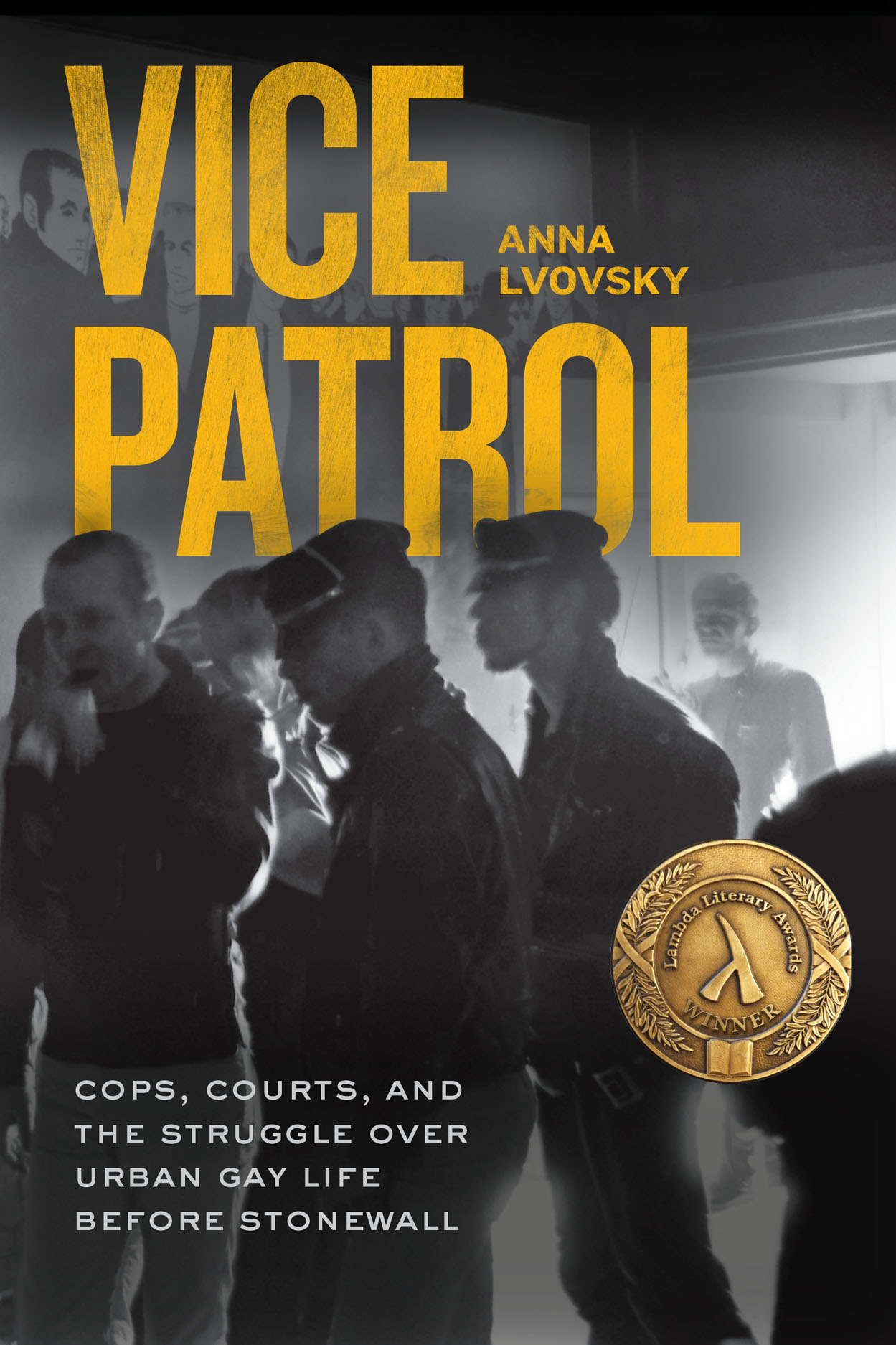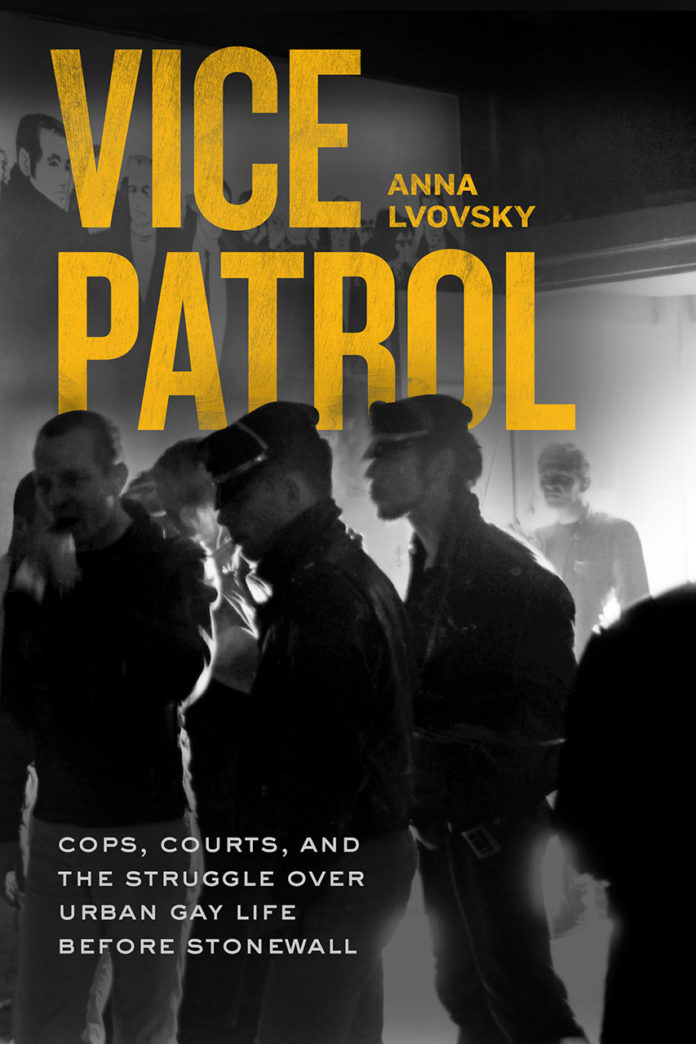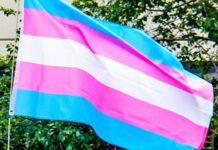In the mid-twentieth century, gay life flourished in American cities even as the state repression of queer communities reached its peak. In Vice Patrol, Anna Lvovsky chronicles the painful story of that repression, tracing the tactics used to criminalize, profile, and suppress gay life from the 1930s through the 1960s, and the surprising controversies those tactics often inspired in court. Vice Patrol enriches understandings of the regulation of queer life in the twentieth century and disputes about police power that continue today. We asked Lvovsky a few questions about her book.

How did you become interested in the history of the criminalization of gay life? What led you to write about it?
I’m increasingly convinced that explaining my path toward writing this book would require a full biography! But two factors were especially influential. First, I came to history from a background in literature and critical theory, and I was immediately struck by how differently queer theorists and historians of sexuality portrayed similar developments, like the relative visibility of gay life in popular culture. Vice Patrol began as an attempt to bear down on that tension, examining how certain moments commonly remembered as points of relative tolerance or liberality in gay history redounded to fuel the legal repression of gay life. That argument still comes through in the book’s discussion of something like the “pansy craze” of the late 1920s and early 1930s, which familiarized the broader public with queer bodies and so directly underwrote the liquor boards’ antigay campaigns following Repeal, or the emergence of a newly sociological understanding of queer cruising culture in the 1950s, which boosted the vice squads’ enticement arrests.
The second big development was an archival find: early in my studies, I stumbled on a few rare documents relating to the regulation of queer life at midcentury, including police manuals aimed at teaching vice officers how to recognize different categories of “sex offenders” and a military report analyzing the relationship among gay servicemen discovered on different bases. These sources were striking for the antipathy they demonstrated toward gay individuals—the same antipathy that drove the work of antigay policing at midcentury. But they were also striking for how self-consciously they tried to make sexual difference visible on the body, or at least legible through the tools of scientific data management. The final version of the book doesn’t rely on all these sources—the military report didn’t even make it into the footnotes. But Vice Patrol is very much interested in the role of the law, and of policing specifically, in producing and disseminating new forms of knowledge about queer communities.
While working on the book, what did you learn that surprised you the most? Did your research turn up anything interesting that didn’t make it into the final manuscript?
I expected many of my sources to surprise me, but I was still taken aback by so many things. The most important, I imagine, is what most surprises new readers of the book: the extent to which, and the many reasons why, judges resisted the vice squads’ most aggressive campaigns against gay men. Focusing on ground-up stories of community building and resistance, most histories of gay life understandably situate the criminal justice system as a site of struggle between queer individuals and the law—and they take sexuality, or its regulation, as their analytic primary lens. Centering the project of antigay policing as its own site of analysis, subject to its own internal politics and struggles, as well as situating that project within the midcentury’s broader debates about police and judicial power, illuminates the many hidden institutional pressures that shaped the courts’ relationships with the vice squads beyond judicial views of homosexuality per se. A key focus of the book is to unearth these hidden battles—and to examine their sometimes-surprising (and not always consistent) influences on gay men’s experiences of the law.
As to research that didn’t make it into the book, a few cuts still pain me to this day. Some are particularly memorable anecdotes that I had to cut for length. I deleted, for instance, the fact that vice officers sent out to entrap gay men by the Los Angeles Police Department sometimes hid their partners in the trunks of their cars to avoid suspicion; or that one gay bar in Pennsauken, New Jersey, in the 1960s was a family-run operation, owned by a Mr. and Mrs. Steimer and staffed by their openly gay son. (I hope that the anecdotes that remain make for these deletions!)
More substantively, my research turned up a good deal of information about extortion rings targeting gay men in the mid-twentieth century. Some operated with the participation of at least some local police officers, but many didn’t. In some cities, like Los Angeles, vice officers explicitly saw their duties in infiltrating popular cruising sites as arresting blackmailers or assailants of gay men in addition to arresting gay men themselves. Some of these officers used such ancillary assignments as moral justification for their work—claiming, in effect, that they were protecting gay men from violence, as well as protecting the impressionable public from gay men. I ultimately had to cut that side of the story, but I think there’s still a great history here to be written.
What do you most hope people take away from your book?
There are a few things that I hope readers will take away from Vice Patrol. First and foremost, there’s the sheer effort that went into the policing of queer life at midcentury. Most people are aware that same-sex practices were once criminalized and that gay men (and, to a lesser extent, lesbians) were once targeted by the police, but outside specialized circles, there’s little appreciation of the sheer scope and intrusiveness of these campaigns. Precisely because gay men and women never actually presented the type of public hazards that police officials accused them of presenting, antigay policing demanded an immense amount of time, labor, and ingenuity from vice officers, from mastering obscure cultural codes in bars and cruising spots to devising hidden observation posts in public bathrooms. The sheer lengths to which officers went to boost their arrest rates lend a touch of absurdity to the story, but they also provide an important reminder of the paranoia and demonization that drove the police’s campaigns against gay life in these years.
Beyond that, I hope readers come away with a sense of the importance of disaggregating complex institutions like the “criminal justice system.” The history of antigay policing exemplifies both the range of sometimes-unique pressure that shapes trial judges’ views of controversial police tactics and the remarkable discretion of low-level legal actors in processing petty criminal cases. Excavating those dynamics offers a more accurate view of the criminal justice system, including both its sources of mercy and its persistent punitiveness. And it encourages us to ask why we might not see similar flights of creativity or mercy in the enforcement of low-level offenses against marginalized (typically poor, typically nonwhite) communities today.
Finally, I hope readers come away with a deeper sense of the relationship between the policing of marginalized groups and the state of public knowledge about those groups. Throughout the book, public understandings of same-sex practices intersect with the vice squads’ antigay campaigns in significant, sometimes surprising ways. That includes, as mentioned, a trend of seemingly progressive cultural developments fueling the suppression of queer life (and, in a few cases, the inverse). Over the past decades, legal historians have done a remarkable job of excavating how shifting cultural dynamics and debates can prefigure and explain shifting legal trends, but Vice Patrol reminds us of the transformative power of legal institutions themselves. Given the unique demands of the legal process, cultural developments or understandings that play one role in public debates do not necessarily translate cleanly into the legal arena but can play a very different role in court.
That story also includes how public misunderstandings about policed communities shape their rights and freedom in court. Throughout Vice Patrol, I trace how judges overseeing the vice squads’ arrests understood homosexuality itself differently than did police officers themselves, a discrepancy that often shielded the police’s controversial tactics from scrutiny. But of course antigay policing is far from the only example of the police using controversial tactics against marginalized and misunderstood communities. The same could also be said about the policing of sex work, anti-terrorism investigations, and anti-gang policing, among other examples. I hope readers come away from Vice Patrol thinking about how pockets of ignorance in the legal system might obstruct checks on police power in these areas today.
Where will your research and writing take you next?
With my first book out of the way, I’m currently enjoying dabbling with a few shorter projects. On the historical side, I’m cobbling together some research I had to cut from the book into a brief history of queer bars in Newark, New Jersey. Unlike the book, this piece homes in on a single city, and it focuses on celebrating the richness and diversity of these spaces as much as on the shadow of policing—which is very fun. On the legal side, I’m working on a number of law review articles that are very loosely inspired by Vice Patrol. One piece, coming out this fall in the Yale Law Journal, calls for a rethinking of the legal significance of “police expertise,” building on a series of examples where claims of police expertise undercut rather than boost police legitimacy in court. (A similar dynamic arises in relation to entrapment tactics in the book.) I’m also working on a second piece that examines the legacies of the police professionalism movement, contrasting that movement’s very different legacies on the ground and in court.
Once those are done, though, I imagine I’ll be ready to start thinking about the next book. I know it will be a twentieth-century history and that it will have a legal focus, but beyond that, I’m still enjoying the sense of endless possibility!
Anna Lvovsky is assistant professor of law at Harvard Law School. Her website is https://www.annalvovsky.com/.
Vice Patrol is available now from our website or your favorite bookseller.









 – RVA...
– RVA...